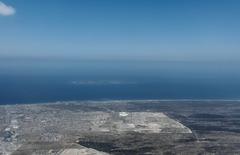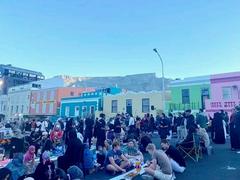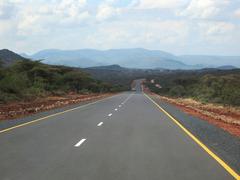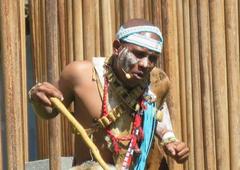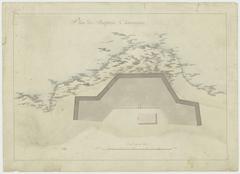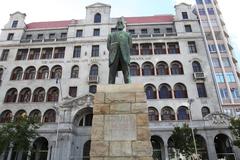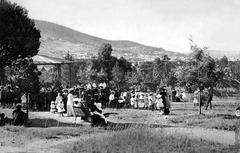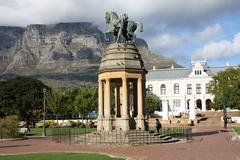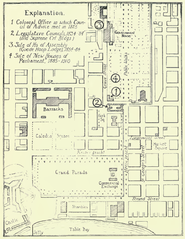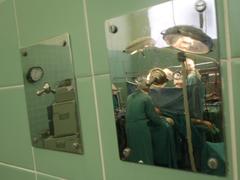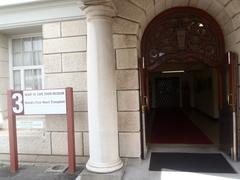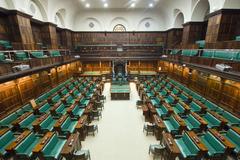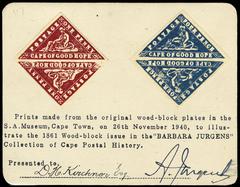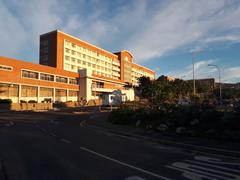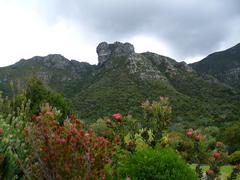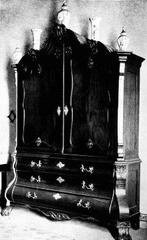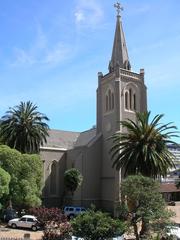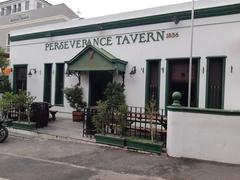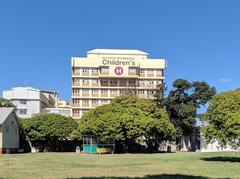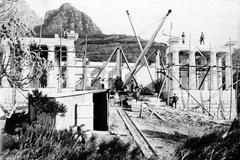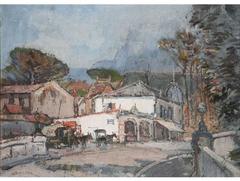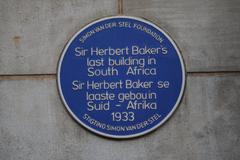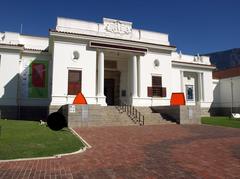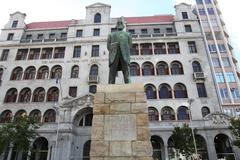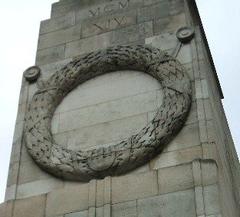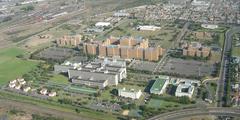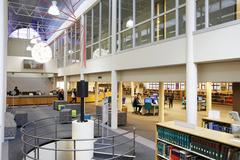National Council of Provinces Cape Town Visiting Hours, Tickets, and Historical Site Guide
Date: 14/06/2025
Introduction
The National Council of Provinces (NCOP) in Cape Town is a cornerstone of South Africa’s democracy, representing the interests of all nine provinces in the legislative process. Located within the historic Parliamentary Precinct, the NCOP offers visitors a unique opportunity to explore South Africa’s political evolution, architectural heritage, and vibrant democratic culture. Whether you are a history enthusiast, political scholar, or a traveler seeking to understand South Africa’s governance, a visit to the NCOP is both enlightening and memorable.
The building’s origins trace back to the late 19th century, and its architectural grandeur—shaped by figures like Sir Herbert Baker—mirrors the nation’s journey from colonialism through union, apartheid, and democracy. The NCOP stands today as a living testament to inclusive governance, provincial representation, and the ongoing project of nation-building (Culture Connect SA, Artefacts, Crown Construction World).
Visiting the NCOP involves practical arrangements such as free entry, advance booking for guided tours, weekday visiting hours, and rigorous security measures (Parliament of South Africa). The precinct is fully accessible, making it welcoming to all visitors. Beyond Parliament, Cape Town’s central city offers a wealth of nearby attractions, enriching your experience of South Africa’s cultural and historical landscape (Cape Town Travel, MyTripToCapeTown).
Table of Contents
- Constitutional Mandate and Purpose
- Composition and Representation
- Legislative Functions and Cooperative Governance
- Visiting the NCOP: Practical Information
- Architectural Features and Evolution
- Cultural and Historical Significance
- Highlights and Visitor Experience
- Public Participation and Engagement
- Related Cape Town Historical Sites and Attractions
- Practical Tips for Visitors
- Events and Cultural Experiences
- Dining and Refreshments
- Transportation and Getting Around
- Frequently Asked Questions (FAQs)
- Conclusion and Final Tips
- Sources
Constitutional Mandate and Purpose
The NCOP is one of two houses of South Africa’s Parliament, established under Chapter 4 of the Constitution. Its core purpose is to represent provincial interests in national lawmaking, ensuring that diverse regional perspectives are considered in the legislative process. Unlike the National Assembly, which is directly elected, the NCOP comprises delegations from each province, reflecting South Africa’s federal structure (gov.za).
Composition and Representation
The NCOP consists of 90 delegates—10 from each province (six permanent delegates and four special delegates, including the provincial Premier). This design ensures both continuity and adaptability in representation. The South African Local Government Association (SALGA) also participates through 10 non-voting representatives (gov.za).
Legislative Functions and Cooperative Governance
The NCOP plays a vital role in approving legislation that affects provinces, sometimes voting as provincial blocs or as individuals, depending on the bill. It serves as a forum for cooperative governance, promoting collaboration between national, provincial, and local government, and exercises oversight over the Executive (thesouthafrican.com).
Visiting the NCOP: Practical Information
Location and Accessibility
- Address: Parliamentary Precinct, Parliament Street, Cape Town
- Visitor Entrance: 120 Plein Street
- Easily accessible via MyCiTi buses, taxis, or on foot from central Cape Town landmarks. The precinct is wheelchair accessible and has clear signage (Cape Town Travel).
Visiting Hours and Tickets
- Hours: Monday to Friday, 9:00 AM–4:00 PM (excluding public holidays and during parliamentary sessions).
- Tickets: Entry is free, but advance booking for guided tours is required (Parliament of South Africa).
Guided Tours and Public Access
- Guided Tours: Available by appointment and offer insight into legislative processes, architecture, and the history of the NCOP. All tours must be booked at least one week in advance.
- Observing Debates: Visitors may observe live parliamentary sessions from public galleries—check the Parliamentary Programme for details.
Security and Entry Requirements
- Submit a valid ID or passport and tour confirmation on arrival.
- Arrive 15 minutes early for security screening.
- Follow rules regarding prohibited items and photography (generally allowed in public areas, but restrictions apply in chambers).
Facilities and Accessibility
- Clean restrooms, waiting areas, and information desks are available.
- The precinct is accessible to visitors with disabilities; contact the Tours Office in advance for assistance.
- No on-site refreshments, but numerous cafes and restaurants are within walking distance (Cape Town Visitor Experience Centres).
Architectural Features and Evolution
Original Design and Construction
The NCOP’s building was initiated in 1875, with Charles Freeman’s original design later revised by Henry Greaves due to engineering challenges. Completed in 1884, the neoclassical structure features red brickwork, white stone facings, and grand Corinthian columns. Its prominent position at the top of Adderley Street underscores its historical and architectural significance (Culture Connect SA, Artefacts).
Major Alterations and Extensions
Key modifications include the 1910 House of Assembly extension by Sir Herbert Baker and a 2001 renovation that introduced a semi-circular chamber layout. The deep red color scheme reflects traditions from the Westminster Parliament (Artefacts).
Heritage Rehabilitation
Ongoing rehabilitation since 2017 preserves the building’s Grade 1 heritage status while integrating modern systems for accessibility and governance (Crown Construction World).
Cultural and Historical Significance
Political Role Through the Ages
Since 1884, the building has served various roles—from colonial governance to the seat of the Union Government, the Senate, and, since 1994, the NCOP. This continuous use mirrors South Africa’s evolving political landscape (Crown Construction World).
Symbolism and Heritage Value
The NCOP’s art collection and layered architectural styles provide a visual narrative of the nation’s journey through colonialism, union, apartheid, and democracy (Culture Connect SA).
Highlights and Visitor Experience
- Architectural Marvels: Explore neoclassical facades, grand halls, and significant artworks.
- Live Parliamentary Sessions: Witness democracy in action from the public galleries.
- Educational Programmes: Civic education initiatives for learners and visitors.
- Photographic Opportunities: Iconic backdrops like the Old Assembly Building and oak-lined avenues.
Public Participation and Engagement
The NCOP encourages public involvement through open sittings and an online platform for accessing draft legislation and submitting comments. Traditional leaders and civil society representatives have dedicated input periods (gov.za).
Related Cape Town Historical Sites and Attractions
- The Company’s Garden: Cape Town’s oldest public park, adjacent to Parliament, with museums and art galleries (PlanetWare).
- Iziko Slave Lodge: Explores South Africa’s slavery and human rights history.
- St. George’s Cathedral: The “People’s Cathedral” and anti-apartheid landmark.
- Greenmarket Square: Bustling market for crafts and souvenirs.
- Bo-Kaap: Colorful historic neighborhood renowned for Cape Malay culture (MyTripToCapeTown).
Practical Tips for Visitors
- Safety: The city center is generally safe during the day; use reputable transport and avoid displaying valuables.
- Best Times: Peak activity occurs during parliamentary sessions (February–June, August–November), but tours may be limited during major events.
- Dress Code: Smart casual attire is recommended.
- Advance Booking: Required for all tours; book early, especially during busy periods.
- Accessibility: Facilities and guides accommodate visitors with disabilities and offer multilingual support.
- Combine Visits: Pair your NCOP tour with other nearby historical attractions.
Events and Cultural Experiences
- State of the Nation Address (SONA): Annual ceremonial event featuring traditional processions and the President’s address (Parliament Press Releases).
- Africa Day: Lectures and cultural programs commemorating African unity.
- Nearby Arts Venues: Artscape Theatre Centre and contemporary art exhibitions.
Dining and Refreshments
- Company’s Garden Restaurant: Located within the gardens; family-friendly.
- Long Street: Offers diverse eateries, cafes, and nightlife (Cape Town Travel).
Transportation and Getting Around
- Public Transport: MyCiTi buses and taxis provide easy access.
- Walking Tours: Many attractions are within a short walk of Parliament.
Frequently Asked Questions (FAQs)
Q: What are the NCOP visiting hours?
A: Monday to Friday, 9:00 AM–4:00 PM, but check for closures during parliamentary sessions or public holidays.
Q: Is there an entry fee?
A: No, entry is free.
Q: Are guided tours available?
A: Yes, but must be booked in advance.
Q: Is the precinct wheelchair accessible?
A: Yes, with facilities and arrangements for visitors with disabilities.
Q: Can I take photos inside?
A: Photography is allowed in most public areas; restrictions apply inside chambers.
Q: How do I book a tour?
A: Email [email protected] or call (021) 403 2266.
Conclusion and Final Tips
A visit to the National Council of Provinces in Cape Town offers an in-depth look at South Africa’s democracy, provincial representation, and layered history. Plan your visit by booking in advance, preparing valid identification, and exploring the wealth of nearby cultural attractions. For real-time updates, multimedia guides, and enhanced planning tools, download the Audiala app and follow us on social media.
Immerse yourself in the heart of South Africa’s governance and cultural heritage—your journey into Cape Town’s democratic soul begins at the NCOP!
Sources
- This guide draws on authoritative sources, including:
- Culture Connect SA, Parliamentary Architecture and History
- Artefacts, NCOP Building Details
- Crown Construction World, Heritage Rehabilitation of the NCOP
- Parliament of South Africa, Visiting Parliament
- Cape Town Travel, Visitor Centres and Accessibility
- MyTripToCapeTown, Cape Town Attractions
- Parliament Press Releases, NCOP and Parliamentary Sessions
